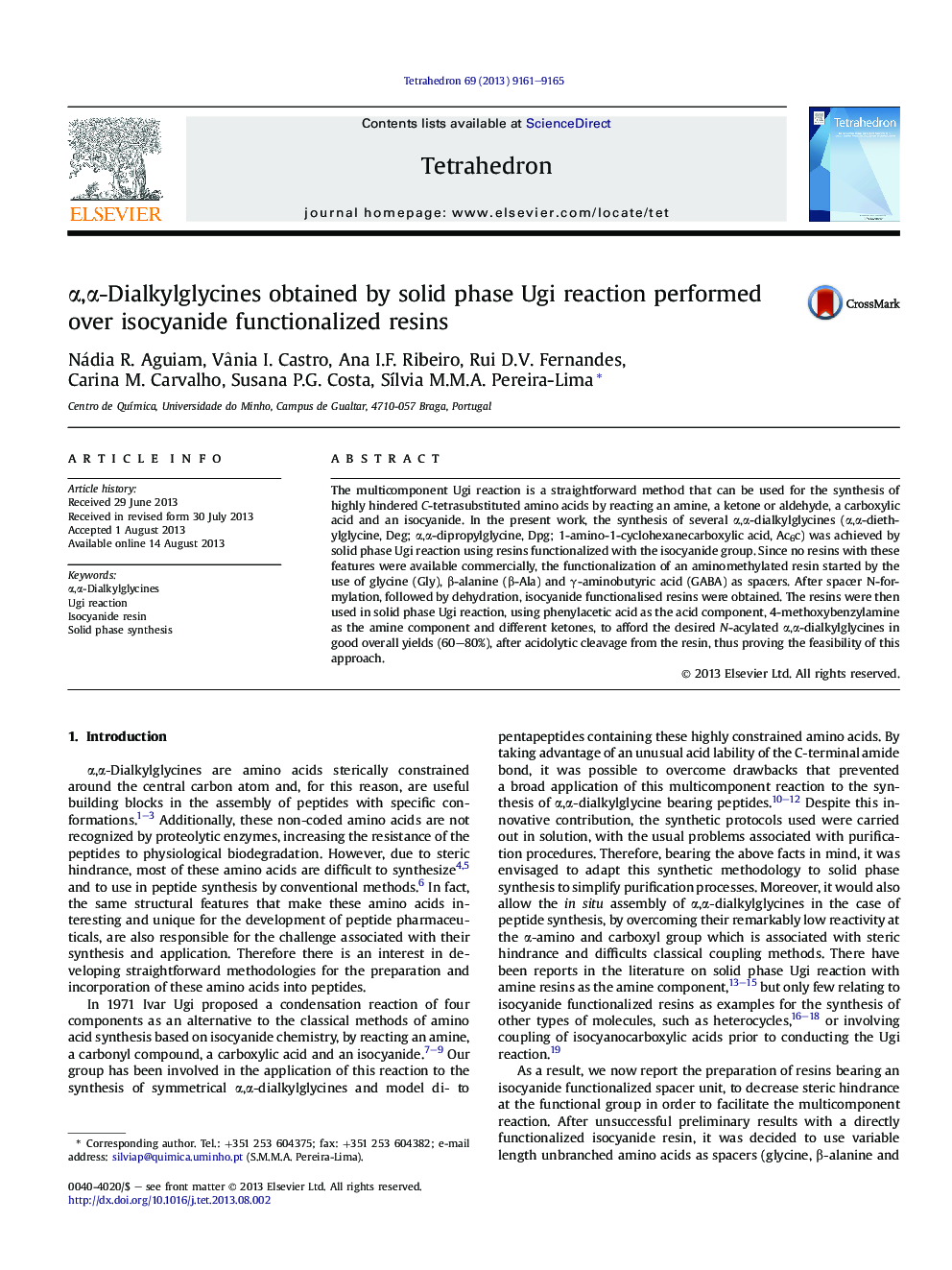| Article ID | Journal | Published Year | Pages | File Type |
|---|---|---|---|---|
| 5217566 | Tetrahedron | 2013 | 5 Pages |
The multicomponent Ugi reaction is a straightforward method that can be used for the synthesis of highly hindered C-tetrasubstituted amino acids by reacting an amine, a ketone or aldehyde, a carboxylic acid and an isocyanide. In the present work, the synthesis of several α,α-dialkylglycines (α,α-diethylglycine, Deg; α,α-dipropylglycine, Dpg; 1-amino-1-cyclohexanecarboxylic acid, Ac6c) was achieved by solid phase Ugi reaction using resins functionalized with the isocyanide group. Since no resins with these features were available commercially, the functionalization of an aminomethylated resin started by the use of glycine (Gly), β-alanine (β-Ala) and γ-aminobutyric acid (GABA) as spacers. After spacer N-formylation, followed by dehydration, isocyanide functionalised resins were obtained. The resins were then used in solid phase Ugi reaction, using phenylacetic acid as the acid component, 4-methoxybenzylamine as the amine component and different ketones, to afford the desired N-acylated α,α-dialkylglycines in good overall yields (60-80%), after acidolytic cleavage from the resin, thus proving the feasibility of this approach.
Graphical abstractDownload full-size image
